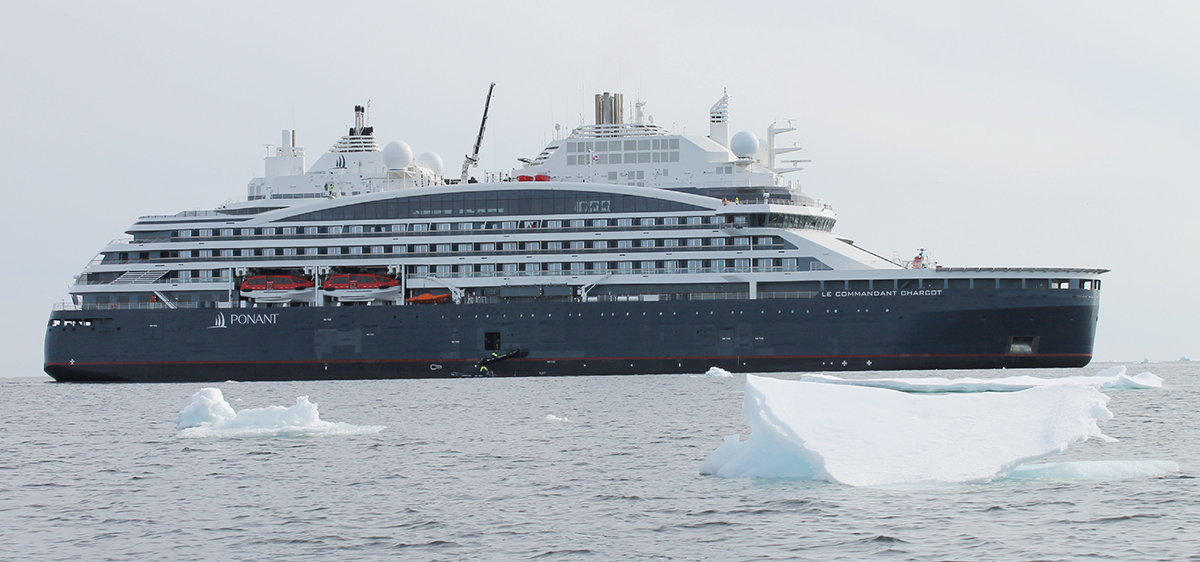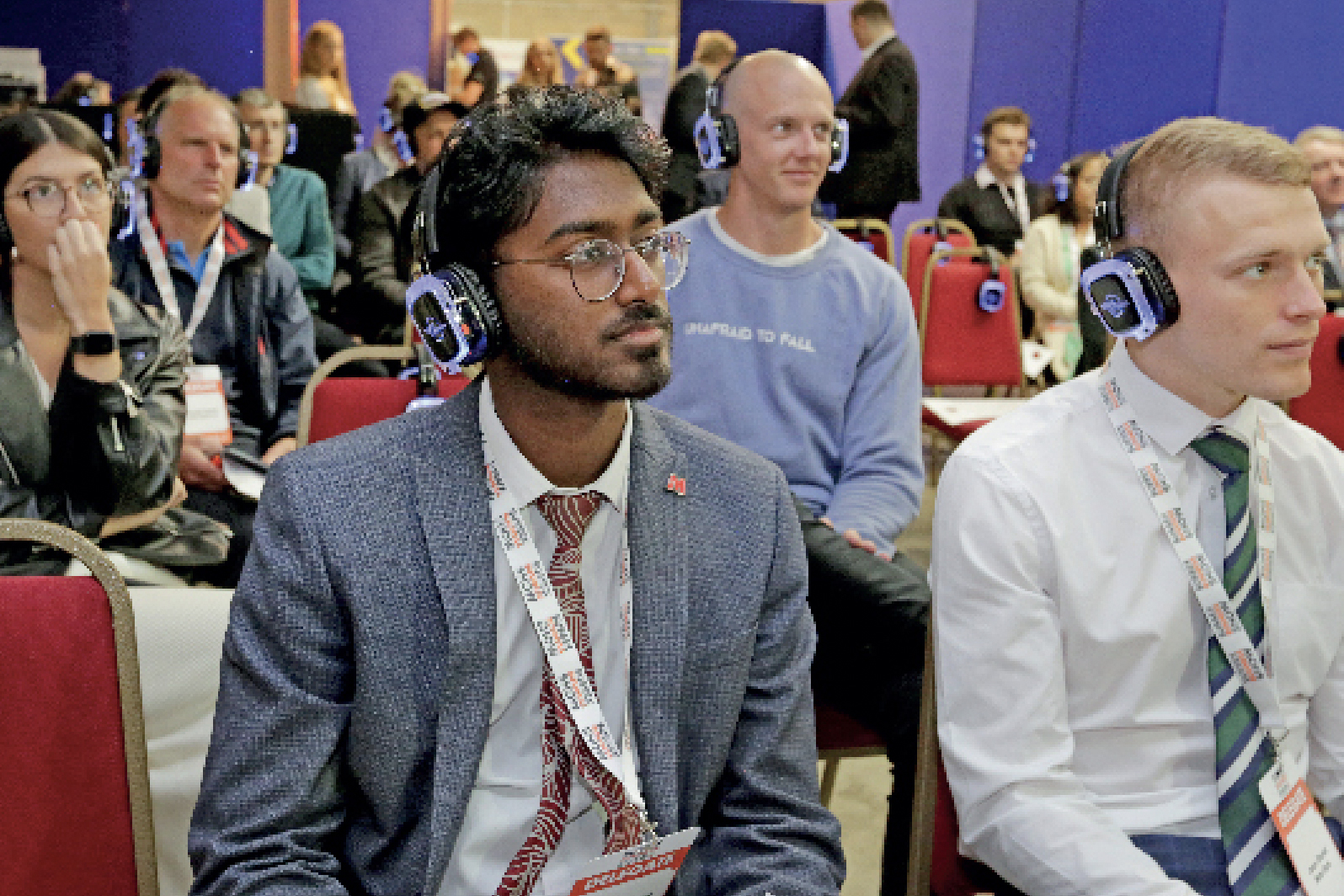
The Charcot is a groundbreaking vessel and the first of its kind, due to the hybrid nature of the propulsion system. It is all aimed at leaving the smallest footprint possible in the pristine wilderness, while saving fuel, of course.
Below the waterline, instead of regular propellers, they have fitted Azipods, a marine propulsion unit consisting of fixed pitch propellers mounted on a steering gondola containing the electric motors that drive the propellers. The beauty of this system is that with a rotary dial, the boat can be manoeuvred in any direction as the pods can rotate 360 degrees.
Each propeller blade weighs 300 tons and it was remarkable to witness it chew through blocks of ice the size of cars with such ease, and then to watch the ice reform behind the boat within minutes, as if we had never been there.
This system was designed and built in Finland by Masa-Yards and the ABB Group. The Charcot is a PC2 ice-breaker (PC standing for Polar Class), the second class; with PC1 being the first, reserved for serious nuclear-powered commercial vessels that break ice for marine shipping, but a first yet again for this type of vessel.
Although ‘only’ 6cm thick, the hull is designed to thrive in this icy environment and carves through the ice as if it were not there, although there were the occasion thumps as a massive block resurfaced and struck the hull. The US Coast Guard also ordered three of these vessels for Polar Security duties.
The Charcot was delivered to Compagnie du Ponant in July 2021, who ran an empty exploratory trip to the Arctic Circle in preparation for its maiden voyage; a voyage we had the pleasure of joining.
The cost was circa £300 million and the vessel weighs in at 31,000 tons, with the batteries alone weighing in at 50 tons. These batteries are different to anything running the Azipods, as the boat is hybrid. Therefore, just like your hybrid car, it can run on battery or engine power with the engines recharging the batteries when required. Even when the engines are used, they run on Liquified Petroleum Gas rather than dirty diesel, again to limit emissions. All waste water is recycled to clean the boat and flush the loos. Even the metal benches on deck are heated with recycled water. I must say that it was very odd in
-5 degrees, dressed to the nines in Artic clothing to then sit on a bench that was hot – delightful and pleasingly odd.
The engines produce 60,000 hp, with 40,470 kW of battery power. Even with the engines being used, it is very quiet at all times and l have to say that l never really heard the engines running. Until, that is, the Chief Engineer, Richard Vito, took me into the bowels of the boat to see them!
Wow! They were the largest marine engines l have ever seen with four huge stacks; each running about 10 metres along the hull, matched to row after row of batteries covered in kevlar for safety. Everything is computer controlled, of course, and there were computer screens everywhere controlling everything – requiring more of a computer scientist now than a marine engineer. We then proceeded through several water-tight doors to the stern to see the top of the Azipods; huge circular monsters which l could see rotating whenever the Captain manoeuvred. It was quite mesmerising, and a feat of engineering way beyond my pay grade.
Most of our ‘parking spots’ were in what they call ‘fast ice’. Oddly, there is nothing fast about this ice but it is the term for ice that is fixed fast to the shore, extending out across a bay. The Captain would simply line up the bow and then power through this ice until half the boat was within it, and then lower the gangplank and we would step off onto this pristine ice-covered bay. It was slightly nervy when they remarked that the water depth below us was 800 metres!
Even nervier (though comforting) was when the guides all disembarked with powerful rifles over their shoulders and flare pistols on their belts to scare the polar bears away. At one point, we were told not to leave the boat as there were polar bears everywhere, and we happily obeyed and instead spent hours taking photos of them. Of course, having our own private helicopter all helped.
I have a bit of a passion for boats and can happily say that La Commandant Charcot is one of the most advanced and unique vessels l have ever had the pleasure of boarding.
We flew with Iceland Air to Reykjavik and it was superb, with great seats, good food, screens in the seat back and happy and attentive cabin crew. Sadly, we had to return with British Airways; what a let-down.
Uncomfortable non-reclining seats, haphazard service, no screens, no food and when l asked for a cup of tea l was told to go online, onto the BA app and order it. It was more expensive that Iceland Air, and the app didn’t work. They should be ashamed of themselves – as should we all - that they are the nation’s flag carrier.




